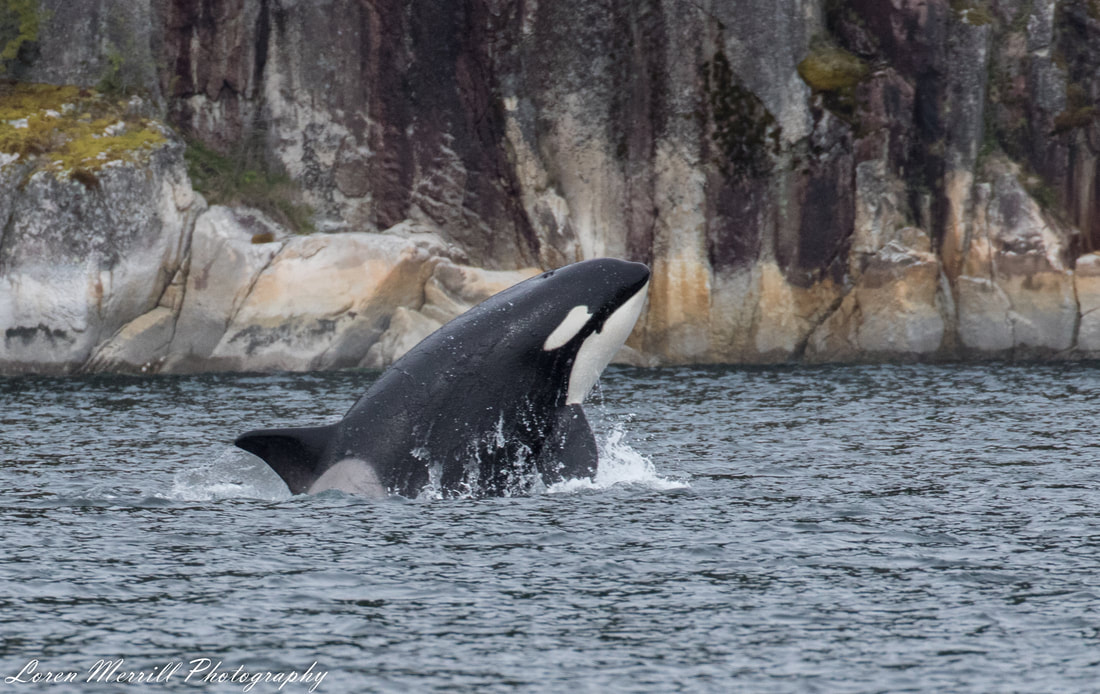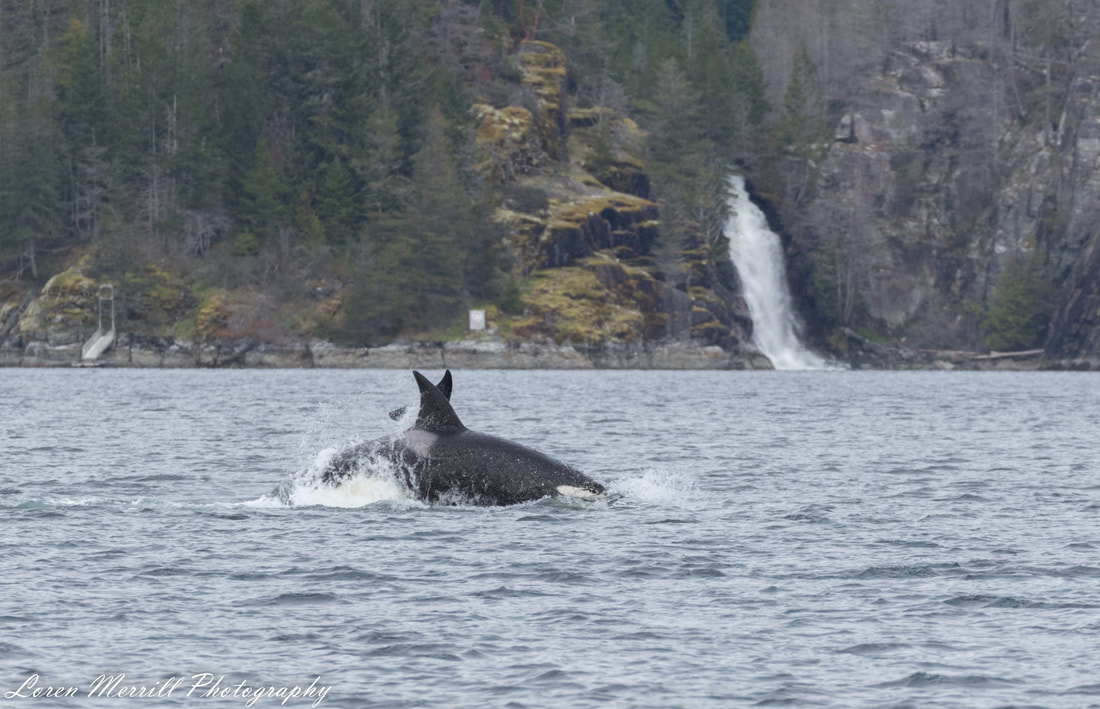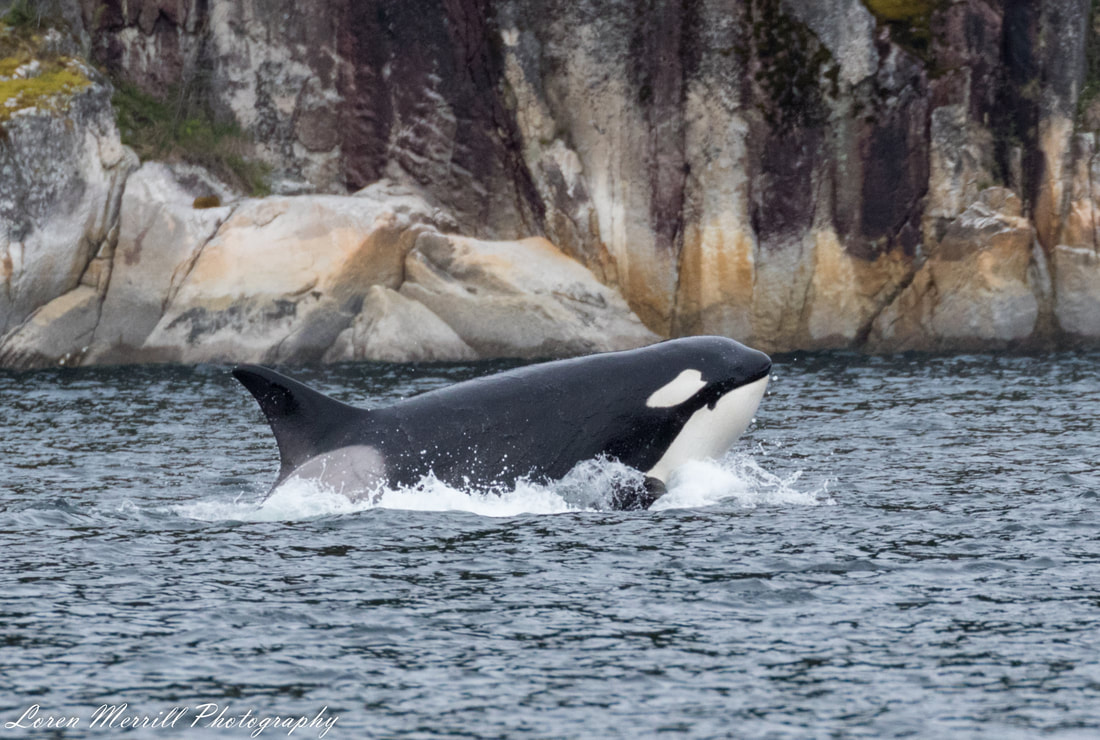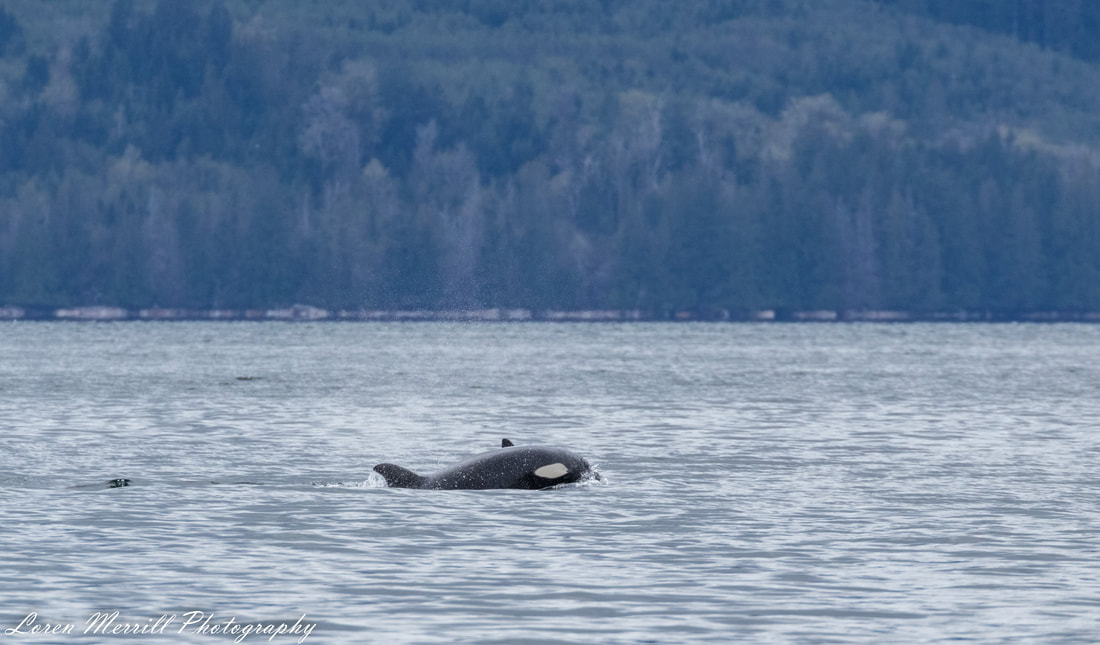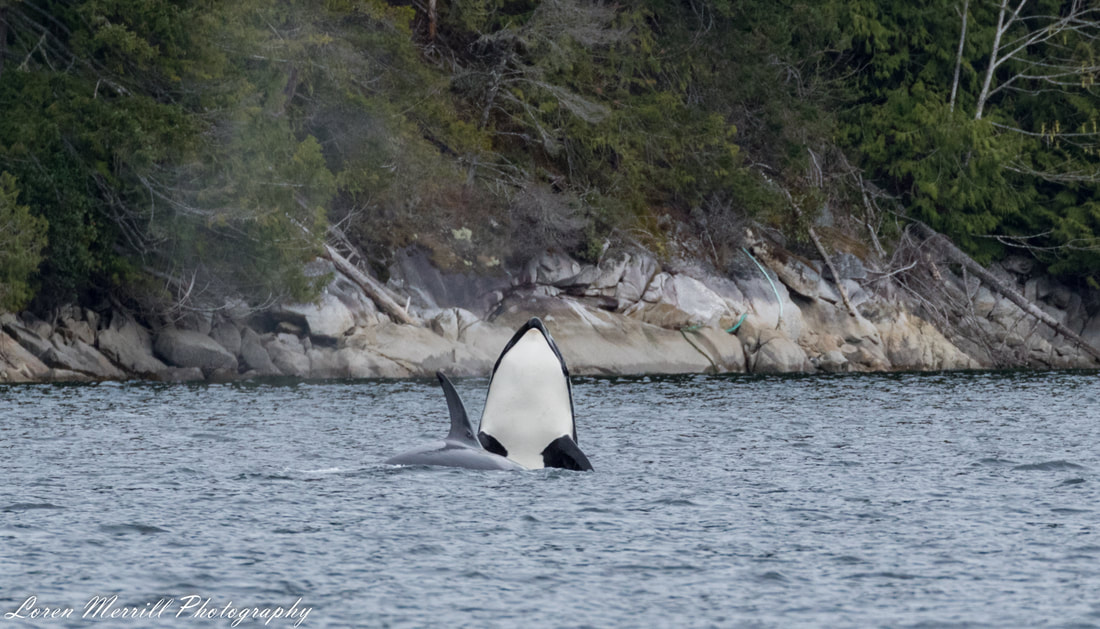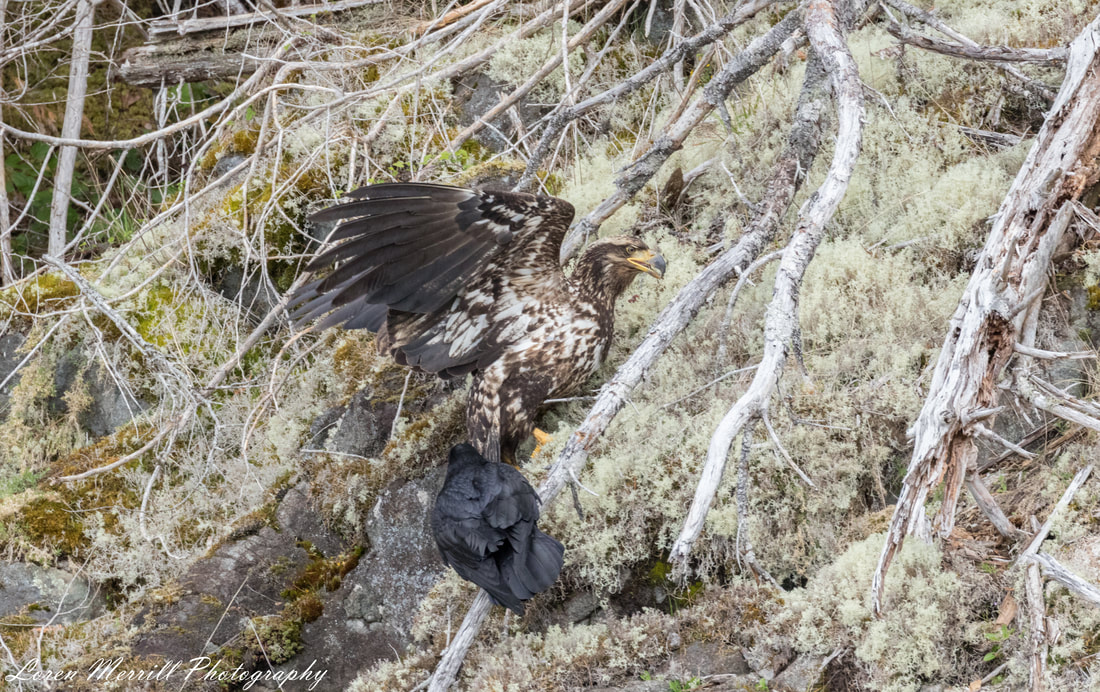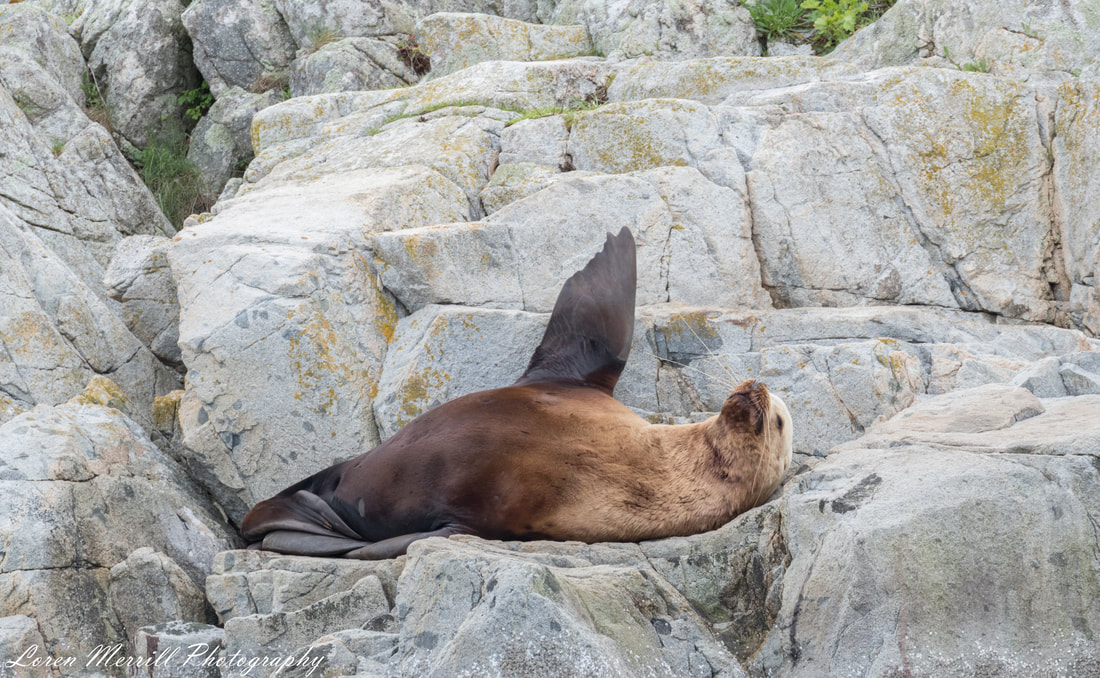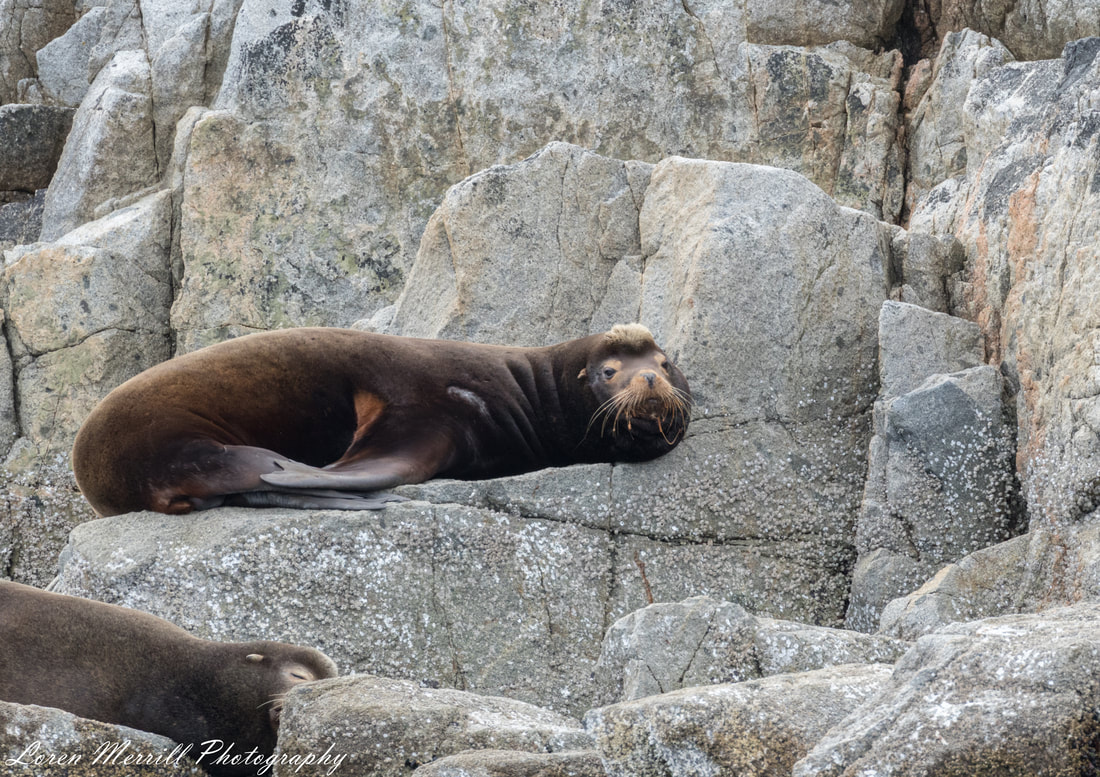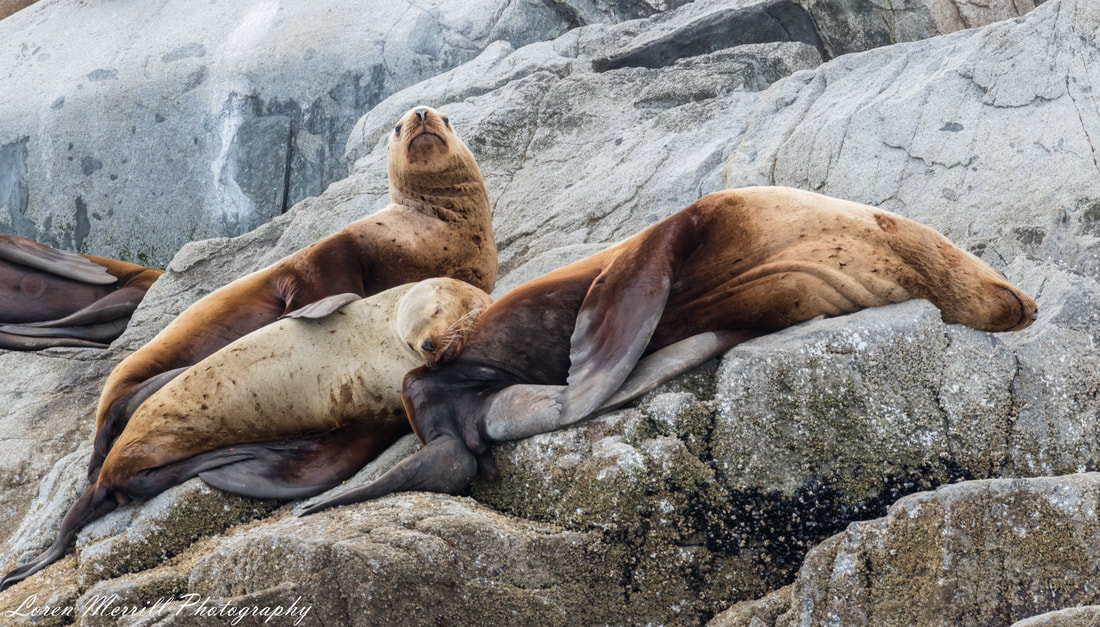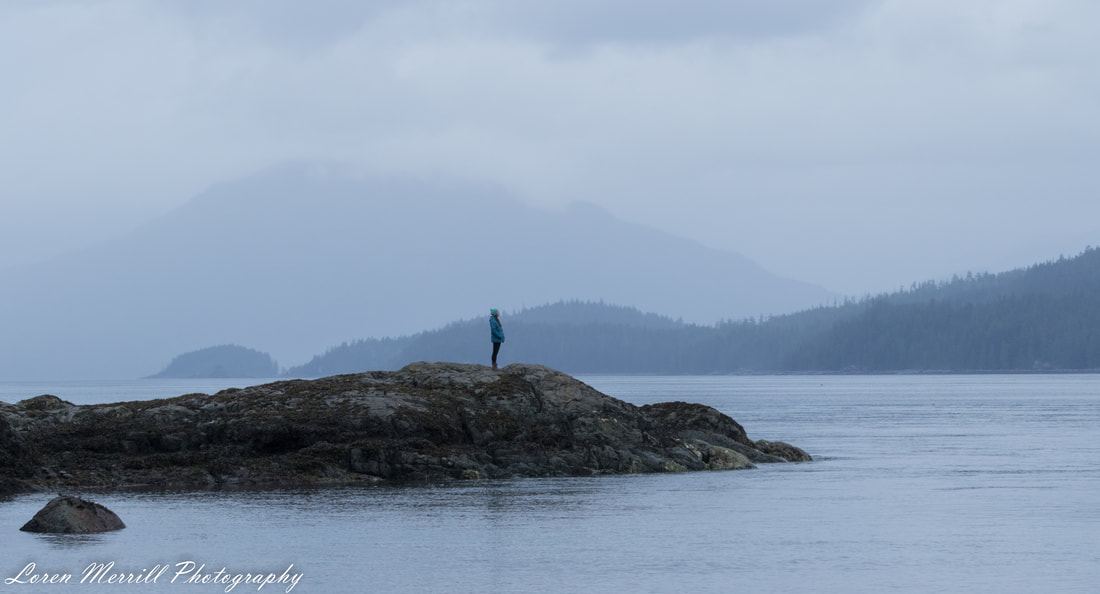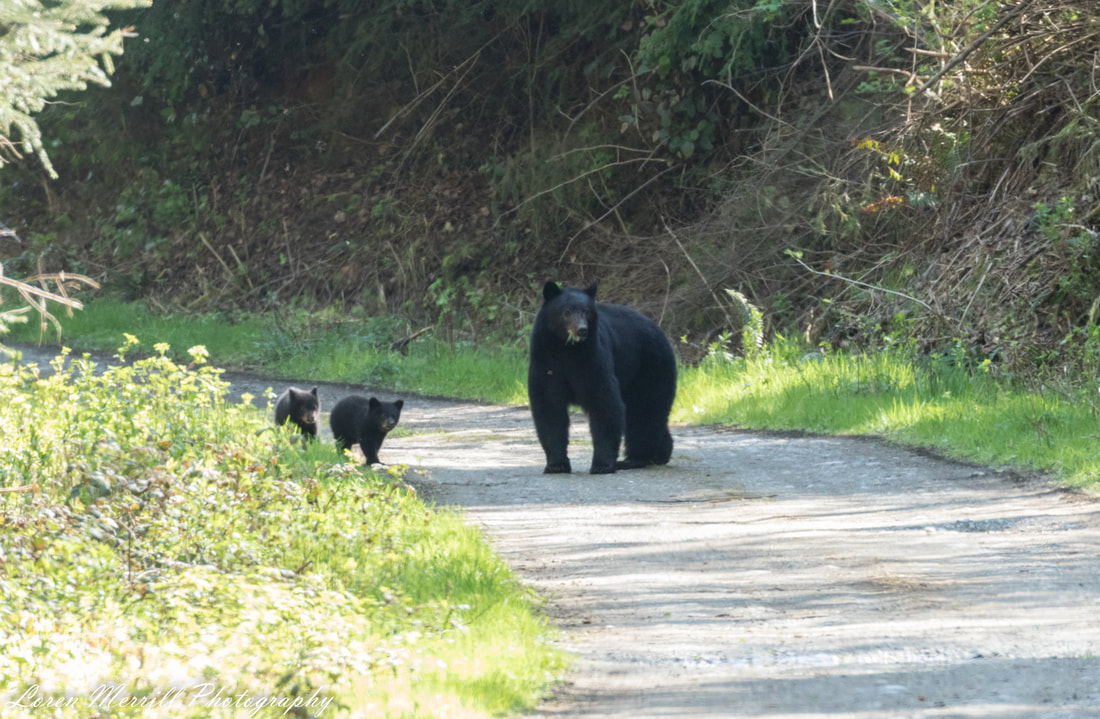|
When we decided that we would be moving to the Pacific Northwest for our writing retreat/wildlife adventure, we hoped that we would have opportunities to encounter lots of marine organisms. As some of the previous posts can attest, we have had a bit of luck in this regard. But one of the prime natural attractions of the northwest is orca watching, and for the first three months of our stint in British Columbia, we had struck out on orcas. That all changed the day before we left Quadra Island. As a result of serendipitous events, and a wonderfully generous friend, we found ourselves bundled up in bright red survival suits, skimming over the waves in a large zodiac boat. We navigated our way among some of the Discovery Islands in search of a pod of orcas that had been sighted earlier. After an hour or so, we came around a rocky headland, turned to head up into a large cove called Teakerne Arm, and saw the first dorsal fins piercing the water. A pod of orcas consisting of maybe 8-10 individuals was swimming around, exhibiting a sort of fission-fusion dynamic; whales would come together into one large group, and then they would split off into groups of 3 or 4. The pod was composed of a few young whales, not much bigger than a dolphin in size, a few intermediate-sized whales, and two or three large adults, one of whom had a massive dorsal fin that curled over at the tip. The whales were quite active, and seemed to be exhibiting hunting behavior, although it was unclear what they were consuming. There are two genetically and behaviorally distinct groups of orcas in the nearshore waters of the Pacific Northwest—“resident” orcas which eat only fish, and “transients” which eat other mammals, including seal, sea lions, dolphins, porpoises, sea otters, and even baleen whales. One of the other guide boats thought it was a transient pod, but we never saw any sign of other marine mammals, and in a few of my photos, it looks like the whales have fish in their mouths, although it’s hard to make out. At any rate, we reveled in watching the whales slap their tail flukes against the water, “spy-hop” (where they go straight up out of the water part ways to get a look around), lunge, and breach. The young whales were involved in all these activities, learning the ins and outs of being a proper orca. After a few hours of sharing the water with these apex predators (which have never been known to mistakenly or purposefully attack a human in the wild) we turned around and headed back towards Quadra. Along the way we stopped to watch a group of bald eagles, a lone raven, and a turkey vulture squabble over access to a recently deceased Steller sea lion that had washed up on a remote rocky ledge. Following that engaging but slightly morbid stop, we swung by an isolated rock island that was populated with sub-dominant male Steller and California sea lions. This gathering of bachelors appeared to be putting on a clinic for how to look lazy. One big male half-heartedly scratched his back, another lay on its side with a flipper raised as if in greeting, and the others were in various states of repose. The young California bulls looked especially goofy with golden tufts of fur sprouting from the top of their heads. We didn’t remain long at Bachelor’s Island (coming soon to a TV network near you!) because we could see that inclement weather was headed our way. We raced to get back before the ocean and clouds joined to envelop us in a cold, wet embrace. The first drops of rain pelted us as we rounded the southern end of Quadra, but we managed to sneak into the harbor just before the rain began to fall with serious intent. We extricated ourselves from the survival suits, said goodbye, and headed back to our Quadra home for one last night. When you live somewhere for more than a month, you can really begin to put roots into the ground there. Both at Ladysmith and Quadra we found that we had developed deep connections with the local environs, including our living spaces. We also found that in adherence with some universal law of entropy, we had filled all the open spaces in the house with ourselves and our stuff. The process of compressing that back into a car-shaped space requires great inputs of energy and patience, and is accompanied by not a small bit of melancholy. But we knew great adventures awaited us, so we bid farewell to our Fox Meadows home and Quadra Island, and hopped the ferry back to Vancouver Island. Our first destination was only a short drive up the coast to a small logging community called Sayward. We stayed at a former lodge tucked into the woods for two nights before heading “up island” to Port Mcneil. The highlight of our time in Sayward was hiking an old trail to Port h’Kusam, which was a long-abandoned collection of buildings clustered in a small protected cove. Nature had reclaimed most of the old settlement, and we poked around a little before settling onto a rock point to look out into the ocean channel. The fog and clouds enveloped most of the surrounding word, and Hardwicke Island (which lay across Johnstone Strait) danced in and out of the fog. We spent an enjoyable three days in Port McNeil, and were given a wonderful parting gift in the form of a mother black bear and her two miniature bear cubs foraging on a trail just outside of town. Mom was munching away on some fresh green grass (one of their primary sources of food when they first emerge from their winter dens), and the cubs were exploring their new world, although not too far from mom. We had stopped once we saw them, but even though we were over 100 meters away, mom must have caught our scent or heard us, and she soon herded her cubs off the trail and into the forest. Elated at our first bear sightings for the trip, we hopped into the car and proceed the 30 minutes to Port Hardy, where we collected provisions for our time in Bella Coola. With an even more fully laden car, we drove to the ferry terminal, and after an extended wait, loaded ourselves and our car onto the massive ferry, and began our 19 hr journey towards Bella Coola, and our new home in Stuie (Stuix).
0 Comments
Leave a Reply. |
About the author:Loren grew up in the wilds of Boston, Massachusetts, and honed his natural history skills in the urban backyard. He attended Cornell University for his undergraduate degree in Natural Resources, and received his PhD in Ecology from the University of California, Santa Barbara. He has traveled extensively, and in the past few years has developed an affliction for wildlife photography. Archives:
|
